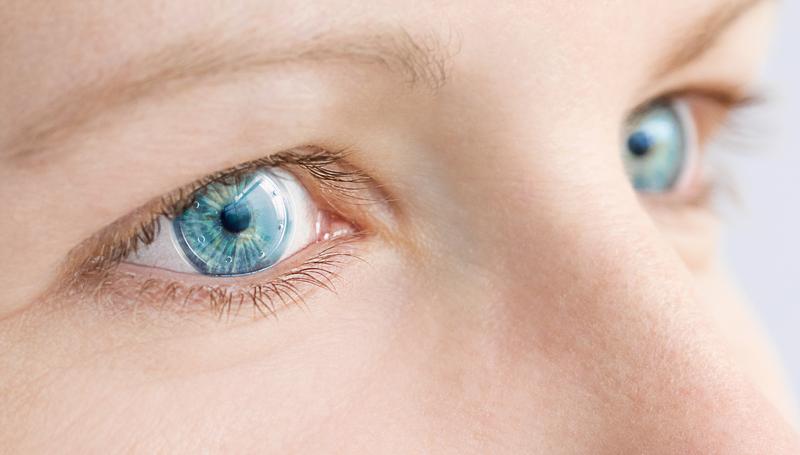

In the future, contact lenses should be able to release medication over time and still be comfortable to wear.
© Fraunhofer IAP
When eye diseases are treated topically often only about five percent of the drug has an effect on the eye tissue. The German-Israeli research team would therefore like to use contact lenses as a transport system for active substances in order to prolong the contact time of the drug with the tissue in the eye.
This system could be used, for example, to relieve pain, improve wound healing and protect the cornea. However, there are a lot of requirements: the active ingredient must be released for as long as possible, the contact lens needs to have excellent lubricating properties and all components must be biologically inert.
There is currently no such application system on the market that meets all of these requirements.
Liposomes release active ingredients over time
The Israeli partner company EyeYon Medical has already developed drug-administering contact lenses that ensure longer residence times of the active substances. Nahum Ferera, CEO of EyeYon Medical, explains:
“These contact lenses release the drug for approximately 20 minutes. When eye drops are used, only 4 percent of the active ingredient generally reaches its target. We would like to extend this length of time as well as the bioavailability.
According to some studies, up to 30 percent of all contact lens wearers complain that wearing contact lenses is generally uncomfortable. With the help of the Fraunhofer IAP and the other partners, we want to improve both parameters – the release time of the drug and wearing comfort.”
The goal of the German-Israeli research team is to coat the inside of the contact lens with liposomes that carry a drug and release it over time. The liposomes are produced at the Weizmann Institute of Science by a research group led by Prof. Jacob Klein and Dr. Ronit Goldberg. However, the use of liposomes is not the only strategy for optimizing contact lenses.
Sugar to enhance efficacy and comfort
“Sugars play a key role in this project”, explains Dr. Ruben R. Rosencrantz, who heads up the project at the Fraunhofer IAP. “Sugars act as lubricants at different locations in our bodies. In the eye’s mucous layer, for example, they enable the eyelid to glide smoothly.
In order to achieve precisely this effect with contact lenses, we at the Fraunhofer IAP have developed polymers with a high sugar content, so-called glycopolymers. They coat the entire surface of the contact lens, but they can also be structural components of the liposomes carrying the drug”, explains Rosencrantz. The glycopolymer coating on the contact lens is being developed by the German company Surflay Nanotec.
On track to becoming a marketable medical device
The five partners and two subcontractors DendroPharm GmbH and Nextar Chempharma Solutions are working closely with one another in obtaining an approved medical device. The three-year project will run until July 2021. The researchers must also ensure that all of the components are biocompatible.
Biocompatibility tests are being carried out at the Rostock University Medical Center. The two subcontractors are also checking whether all system components have been manufactured in accordance with GMP (good manufacturing practice) guidelines, a kind of quality seal for the pharmaceutical and medical industries.
“Once the functionality and biocompatibility of the contact lens has been ensured, we also need to make sure that the glycopolymer can be produced in large quantities”, explains Rosencrantz who has studied both chemistry and biology.
“The mass production of glycopolymers is a very important aspect of the project at the Fraunhofer IAP because, in the end, the price must also be competitive”, Rosenkranz explains.
The project is receiving around one million euros in funding from the German Federal Ministry of Education and Research (BMBF).












